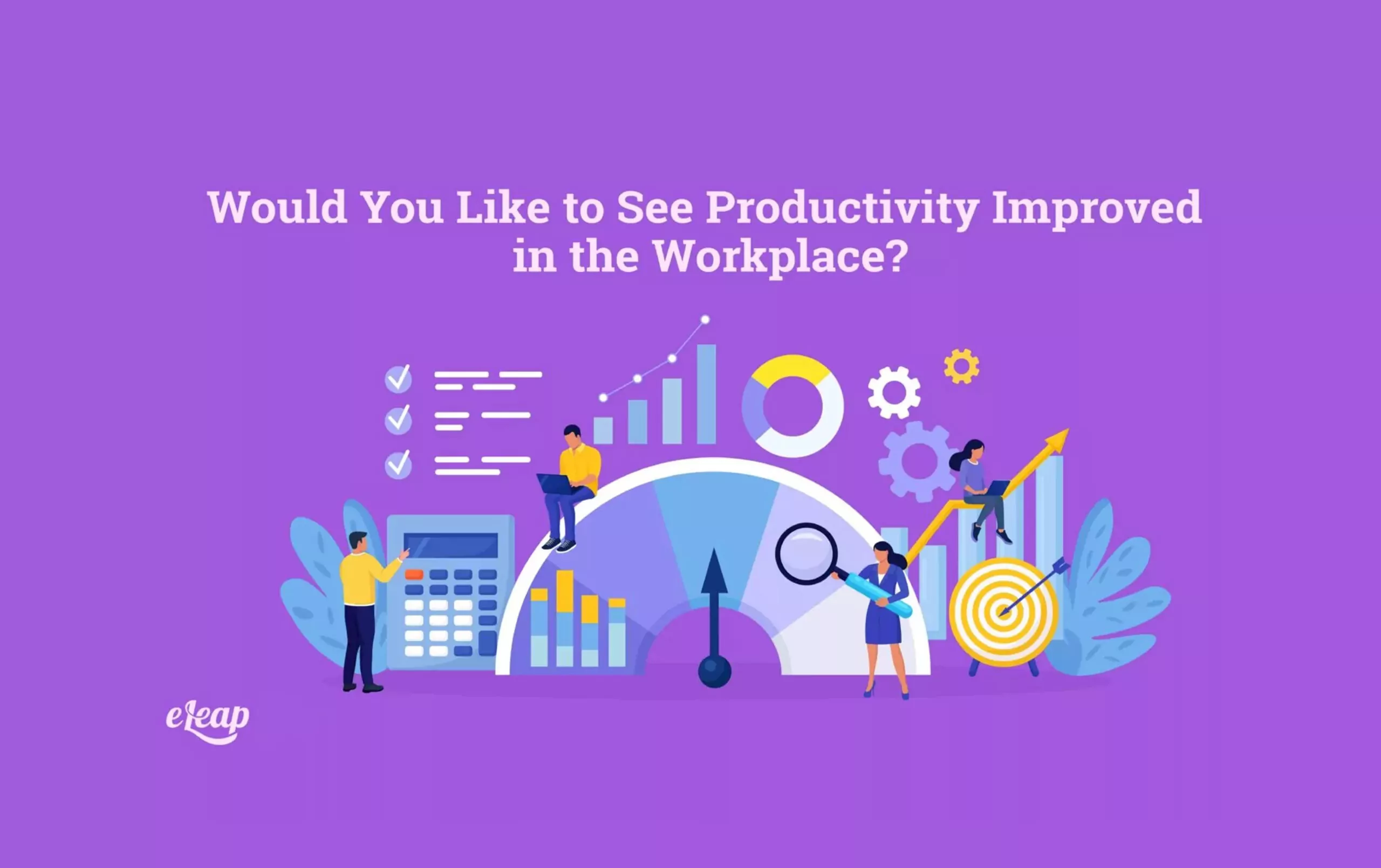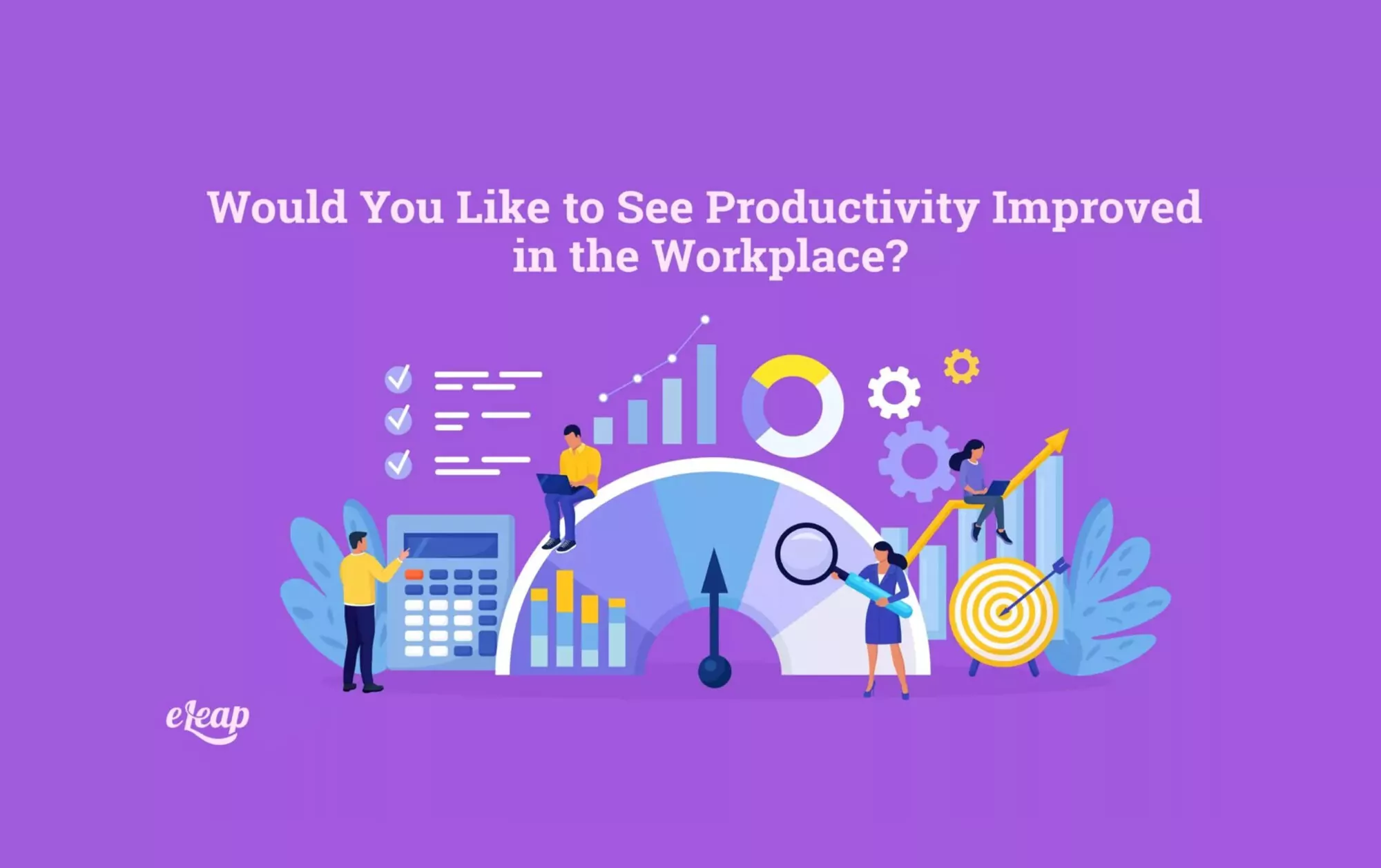Would You Like to See Productivity Improved in the Workplace?

As leaders, we long to see productivity improved within our teams. We look for new ideas and new methods routinely. We realize that the model of work we have become accustomed to simply doesn’t work.
Think about it. We work 50 or 60 hours in the office. Then we come home, and we answer emails after dinner or as soon as we wake in the morning.
We commute while taking calls. We exist on coffee or energy drinks—all to repeat the same pattern the next day.
Many of us feel overworked and underpaid. We feel underappreciated and like we don’t matter to the people at the top of the ladder. Some of us feel like we are just a nameless cog on the wheel of someone else’s business.
It’s no wonder productivity suffers! We’re tired and busy and feel like nothing gets done. Still, there’s hope. A move toward a different style of leadership is happening.
Many organizations are beginning to change their leadership style to a people-centered design. Leaders are challenged to understand themselves as leaders and to understand employees better. They are encouraged to learn about the things that lead to a healthy, more balanced life.
We strive to see productivity improved while spending less time at the workplace. Research in several areas of science indicates it is possible to get more things done in less time. Isn’t that what we all want?
Want Productivity Improved? Never Stop Learning

Have you heard the theory that once we hit adulthood, our brains become stuck? There’s no more room for growth or change. That theory has become outdated.
By reading about new discoveries in the areas of neuroscience, we learn that ideas regarding mental health and brain chemistry have changed. There have been new discoveries regarding productivity too. We can use the information we learn from new theories the facilitate our team’s improved productivity.
Our employees can grow and change well into adulthood with specific factors in play. We need to provide them with support in the workplace. Employees need to be challenged but not stressed.
Combine the support and challenges with a healthy way of life, and employees can become their best selves. They can hone their natural talents. Someone who seems average at work can improve and become excellent when they feel supported and challenged but not stressed.
How Stress Hormones Affect the Brain and Productivity
Our brains have three distinct portions that act like three different organs at times. Those sections have specific functions, and stress triggers each differently.
The most primitive portion of our brains is made of the cerebellum and the brain stem. Sometimes it’s called the reptilian brain because it is similar to what we see in reptiles and other animals without more developed thought processes. This section of our brains controls our heart rate, breathing, and our protection mode.
If the workplace feels unsafe, the protective portions of our brain activate. Once this portion of the brain triggers, the frontal lobe is inaccessible.
All mammals have a limbic brain structure. It’s slightly more developed than the reptilian section. Emotions, memories, and aggression reside in the limbic structure. This portion of the brain controls many behaviors. For example, our limbic brain activates if we are thinking about our relationship.
The difference between a human (or primate) brain from that of other mammals is the neo-cortex. This section is more commonly called the frontal lobe. Language, abstract thinking, innovation, and creativity live in the frontal lobe.
When we talk about productivity improvement, we also talk about creativity and innovation. Our team’s creativity and innovation are the things that make our company stand out from the competition. If someone feels unsafe at work, the primitive reptilian section of the brain activates, and the frontal lobe can’t be used for innovation.
You can’t force innovation or creativity. Tying innovation to retention with the company will trigger a fear response. Fear triggers adrenaline and cortisol production, which will cause creativity to cease.
Creativity and productivity will falter if you create an unsafe or stressful environment. That situation is bad for both your employees and your business. If you genuinely want productivity improved, you want a safe, minimally stressful environment.
The Rhythm of Productivity
Is your day filled with constant motion? Many of us read emails before we have our first cup of coffee in the morning. We take calls during our commute. When we get to work, we spend all day jumping between projects.
Did you know that we aren’t meant to be on the go constantly? Our minds and bodies are designed to follow a circadian rhythm. Their circadian rhythm responds to the light or lack of light in our environment.
If you think about how your sleep cycle works, it isn’t an automatic fall into a deep sleep and stay there kind of cycle. Instead, you switch between deep sleep and a REM cycle that is filled with dreams. The cycles change approximately every 90 minutes.
Our days are designed to mimic are nights. We aren’t supposed to go non-stop for eight to ten hours at a time. During the day, you might find you have times when you are less focused and times when you’re more focused. This rhythm is called an ultradian rhythm.
Ideally, we should work in 90-minute chunks. We should take a break between each 90-minute increment. One way to establish this pattern is to choose three tasks that need to be completed and set a timer to establish the rhythm.
Alternatively, you can pay attention to your body’s natural signals. When you begin to feel tired, restless, or less focused, you need a break. You should walk away from your tasks for 15 minutes after every 90-minute work increment.
Productivity Is Improved When You Get in the Zone
Have you ever noticed when a ball player is really on their game? They are said to be “in the zone” The same concept applies to a work environment.
Think about a time when you got engrossed in your favorite movie. Everything around you seemed to disappear into nothingness. We can achieve that same level of focus when we work.
It’s more difficult to get into the zone at work. Distractions are everywhere. Emails, text messages, phone calls, conference calls, meetings, and even the chatter around us fight for our attention.
Add to that the tendency to jump from project to project rather than focusing on one thing at a time. It’s no wonder that productivity suffers! Multi-tasking like that doesn’t really work.
The key to getting into the zone at work is to set the right goals. You should have a project that is challenging enough to keep you focused but not so challenging that you become frustrated. The project should hold your attention for a length of time.
Next, we must remove all distractions from our work area. Truthfully, what is distracting for one person may not be distracting for another. So, we need to set our personal workspace up without the things that distract us personally.
When we can get into the zone at work, our work will improve. The improved quantity and quality of our output will lead to greater satisfaction with our abilities. As we gain confidence, we will see improved productivity.
The Leader’s Role in Improved Productivity
To become a leader in the workplace, you have a specific skill set that your employer values. As a leader, you can use your natural talents to motivate your employees. However, even the most natural leader needs a boost.
As a manager, you should understand that everyone can improve their performance, even you! It’s a wise choice to continue learning about how to get peak performance from your team.
The leaders of the team should create an environment that fosters productivity. To do that, it’s essential to understand how to minimize stress and maximize the growth potential of the team.
To maximize your potential as a leader, develop an attitude of learning. Never stop learning! No matter how much experience you have, there are new techniques and ideas you may not know. Ideas and techniques are constantly changing; the next big idea might be the perfect one to implement for your productivity to be improved.
Final Thoughts
People of science are continually reexamining what we know about human learning and behavior. Once, it was thought that people stopped evolving when they reached adulthood. Now, it’s said that people continue to grow and change well into adulthood.
The brain is a powerful organ with three sections that have independent triggers. Stress hormones trigger a creative shutdown. Establishing a rhythm at work that includes focused work interspersed with routine breaks will see productivity improved.
If the workspace elicits a feeling of fear, creativity and innovation are stifled. If creativity is stifled, productivity suffers. When a team focuses and gets into the zone, their productivity is improved.